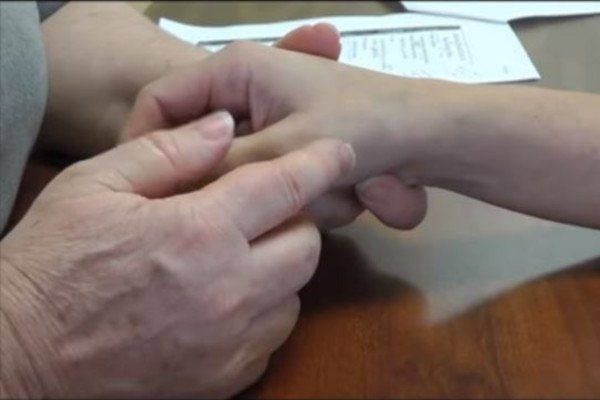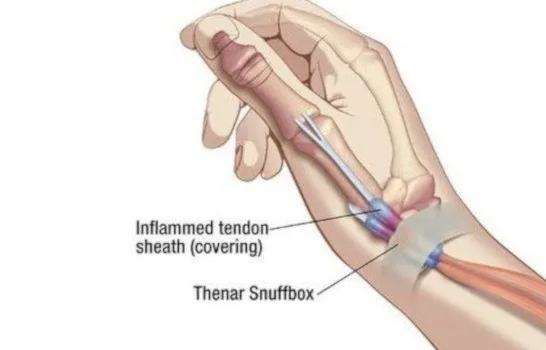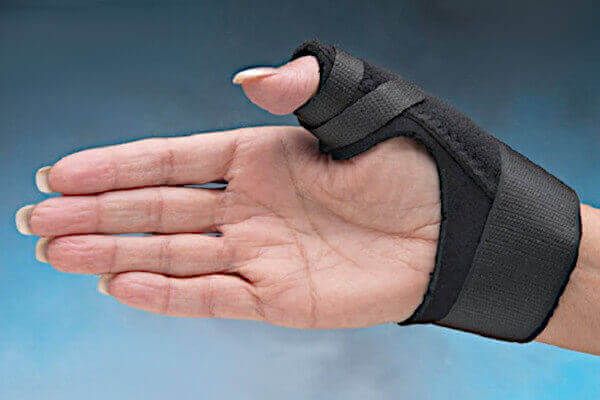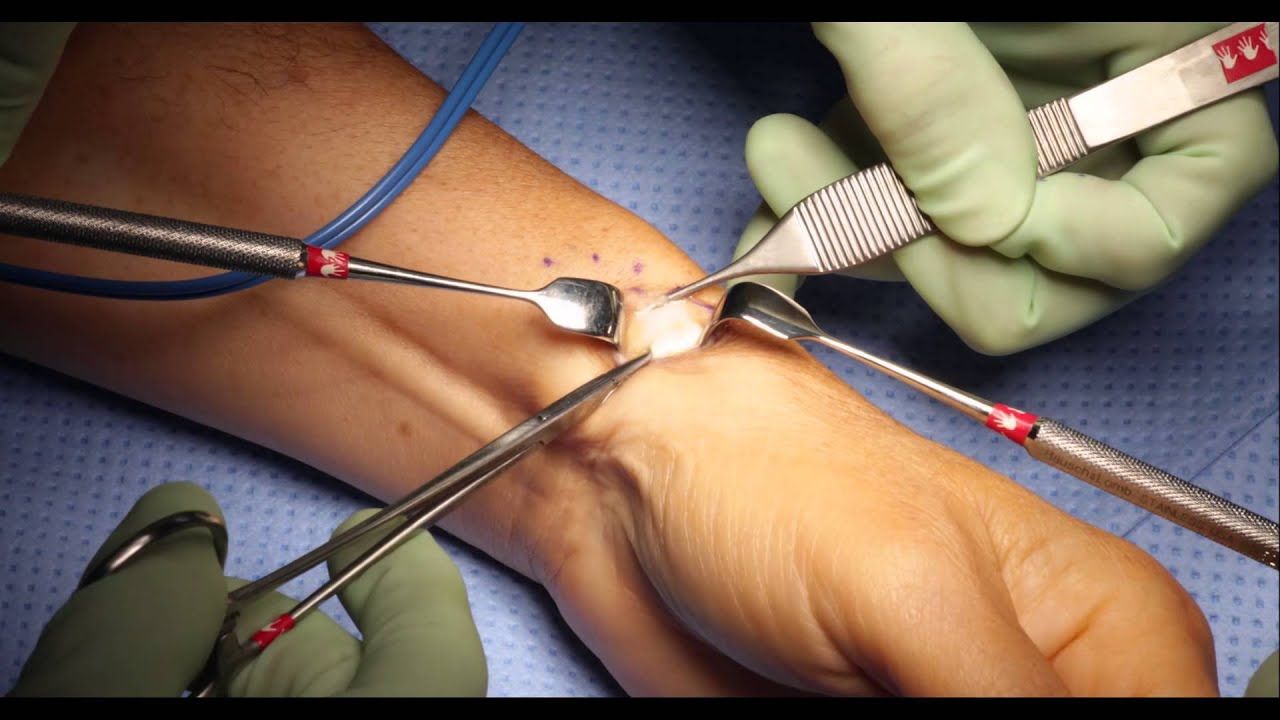What Is de Quervain’s Syndrome?
From Dr. Z - Carpal tunnel syndrome specialist
What Is de Quervain’s Syndrome?
The main sign of de Quervain’s Syndrome is that your thumb hurts when you move it. People with de Quervain’s tendinitis pain actually have the condition doctors call “de Quervain’s Disease” or “de Quervain’s Tenosynovitis.” Many people incorrectly mistake it for carpal tunnel syndrome or even wrist tendonitis.
Do you do a lot of text messaging with your thumb? Is the rest of your hand relatively normal? If you answered “yes” to these questions, you may have this painful condition.
But don’t despair! There are several remedies available so the pain never bothers you again.
- FIND OUT: do you have carpal tunnel? No strings attached self-test.
Other Names for de Quervain’s Syndrome
While this condition has been known for well over a century, it goes by many names, some of which relate to its connection with modern activities. For example, de Quervain’s Syndrome also goes by:
- Texting Thumb
- Gamer’s Thumb
- BlackBerry Thumb
- Washerwoman’s Sprain
- Mother’s Wrist
- Mommy Thumb
- Radial Styloid Tenosynovitis
- De Quervain’s Disease
- De Quervain’s Tenosynovitis
- De Quervain’s Stenosing
- Designer's Thumb
In 1895, a Swiss surgeon named
Fritz de Quervain saw patients with a pattern of thumb pain symptoms. They also had similar histories that might cause the pain. He was the first to describe the problem as one condition. Dr. de Quervain also described the underlying anatomy and pathology. Thus, the condition now bears his name.
Today, we know that de Quervain’s Syndrome pain is
relatively common. In the working population, it affects about
0.5 % of males and 1.3 % of females.
During the COVID-19 pandemic, the incidence of de Quervain's Tendinitis
increased due to an increased reliance on smartphone apps.
Most Common Symptoms
The thumb is the only finger to exhibit de Quervain’s Syndrome pain. That’s why some patients describe it as “de Quervain’s thumb pain.” Specifically, the tendons on the outside area of your thumb and wrist hurt the most. Other symptoms include:
- Pain when you grasp something, make a fist, or turn your wrist. The pain can be dull or sharp. Sometimes, simply extending your thumb a little will cause pain.
- In some people, swelling may occur at the base of the thumb or side of the wrist. Also, the area may be sensitive if you apply a little pressure.
- Other patients may feel their thumb “sticking” when trying to move it. Some describe it as their thumb “catching on something” as they try to move it.
- As the condition worsens, pain may spread further into the entire thumb. It may also extend toward the forearm. The pain easily increases by making grasping or pinching motions with the thumb.
How Doctors Diagnose de Quervain’s Tendinitis
The best way for your doctor to diagnose de Quervain’s Tendinitis is by using the Finkelstein test. This is a very simple and reliable test method.
Start by laying your thumb across your palm (see picture above). Next, make a fist with your thumb inside the fist. Finally, bend your wrist away from your thumb side in the direction of your little (pinky) finger. If you have de Quervain’s Tendinitis, doing so will feel tender or painful near your thumb’s base or near the wrist.
Causes and risk factors
Doctors don't know the exact reason you get this condition. However, de Quervain’s Tendinitis is far more common in people who perform activities that overuse the thumb, mostly for gripping or repetitive motions.
The condition is very common in people who text message a lot. The incidence is even
rising among teenagers, who are known to text most frequently.
People who frequently play racket sports, golf, or garden are also at high risk. Even lifting an infant multiple times a day can put you at risk.
De Quervain’s Tendinitis is more common in people who injured their wrist or thumb. And those with
rheumatoid arthritis are more likely to get it.
Other Risk Factors
- Your age: Those between 30 and 50 years old are more prone.
- Your gender: De Quervain’s Tendonitis pain is more common in females.
- Child care: The other names for de Quervain’s Tendonitis are “mother’s wrist” and “mommy thumb.” Lifting an infant over and over during the day requires using the thumbs and puts you at risk.
- Pregnancy: Pregnant women are several times more prone to getting the condition than when not pregnant. De Quervain’s has this in common with carpal tunnel syndrome. However, this is very different than carpal tunnel syndrome during pregnancy.
- Daily hand activities: Any occupation that requires repetitive wrist and thumb movement puts you at higher risk for getting de Quervain’s Tendonitis.
When to See Your Doctor
Usually, you can treat de Quervain’s Syndrome pain without too much trouble because it responds well to most therapies. These therapies are:
- Rest your thumb in a thumb splint (with a thumb spica) for 4-6 weeks.
- Apply a heating pad to the affected area several times daily.
Use non-steroidal anti-inflammatory drugs (NSAIDs) like naproxen (Aleve) or ibuprofen (Advil, Motrin).
If the above therapies are unsuccessful, you should see your doctor. The doctor will likely prescribe
steroid shots. If so, the doctor injects the steroids into the thumb area to reduce inflammation of the thumb’s tendons.
When Is Surgery Needed for de Quervain’s Tendonitis?
If none of the above therapies are successful, surgery may be necessary. Doctors will consider a patient for surgery once 3 main criteria are met. These criteria are when the patient:
- Still has severe de Quervain’s Syndrome pain and,
- Has tried all self-treatments unsuccessfully, and
- Was given a course of steroid shots with no success.
Doctors normally perform this surgery on an outpatient basis. The surgery is called
de Quervain’s Release, and it involves making a 1-2 inch incision on the outside of the thumb area over the swollen tendons.
Then the surgeon frees up the tendons from any adhesions around them. Doing so gives the tendons more room to move.
Recovery can take a few weeks to months, depending on several factors. Chief among them is your overall health.
Conclusion
Patients with de Quervain’s Tendinitis have difficulty grasping, and pain is focused on the thumb when it’s moving. The Finkelstein test can determine if you actually have de Quervain’s. This painful condition is usually treatable if you follow the proper therapy regimen, including rest, a heating pad, and pain medicines. If these are not successful, then steroid shots may be needed. And if the shots fail, you may require surgery.








